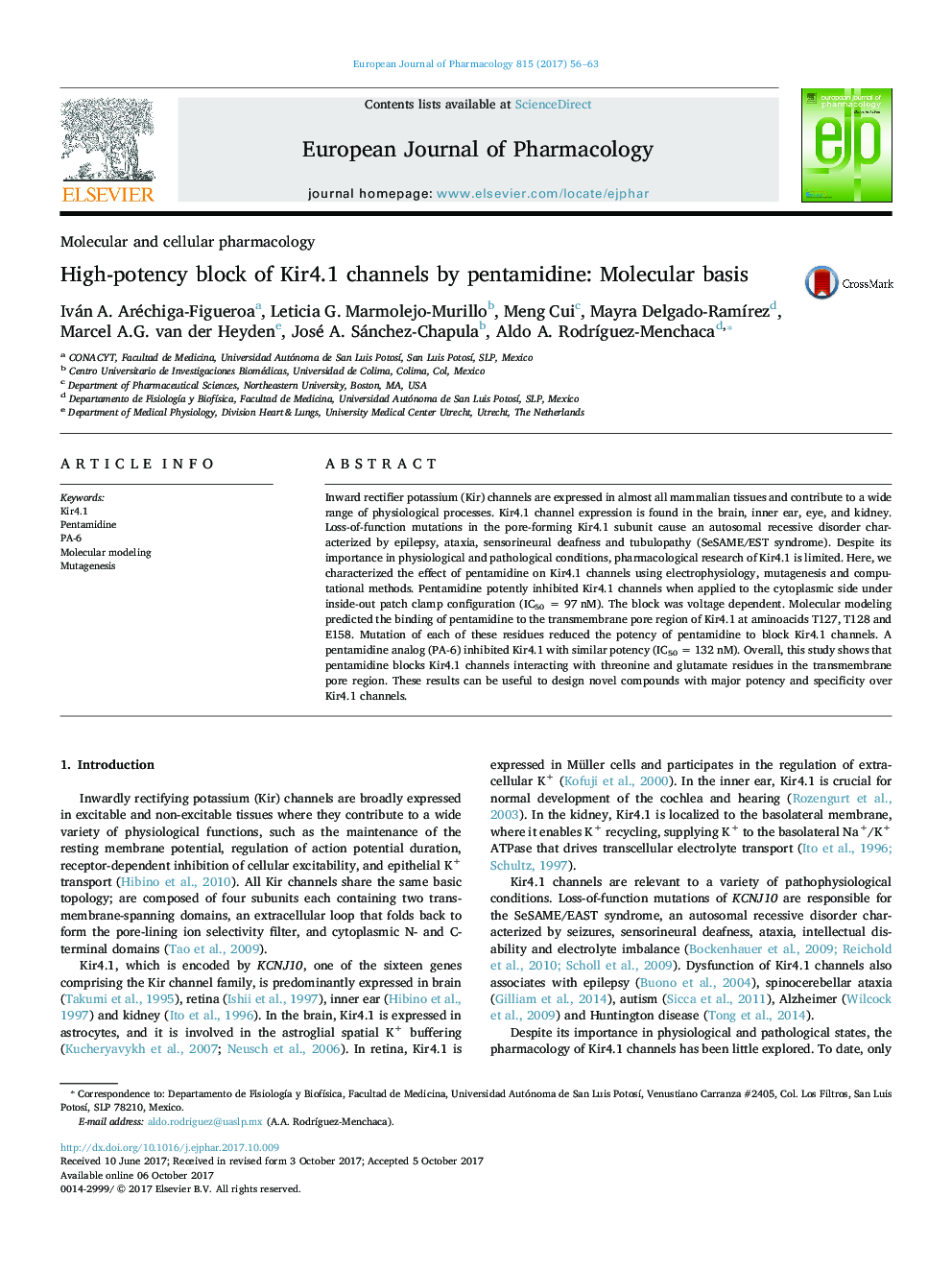| Article ID | Journal | Published Year | Pages | File Type |
|---|---|---|---|---|
| 5554328 | European Journal of Pharmacology | 2017 | 8 Pages |
Inward rectifier potassium (Kir) channels are expressed in almost all mammalian tissues and contribute to a wide range of physiological processes. Kir4.1 channel expression is found in the brain, inner ear, eye, and kidney. Loss-of-function mutations in the pore-forming Kir4.1 subunit cause an autosomal recessive disorder characterized by epilepsy, ataxia, sensorineural deafness and tubulopathy (SeSAME/EST syndrome). Despite its importance in physiological and pathological conditions, pharmacological research of Kir4.1 is limited. Here, we characterized the effect of pentamidine on Kir4.1 channels using electrophysiology, mutagenesis and computational methods. Pentamidine potently inhibited Kir4.1 channels when applied to the cytoplasmic side under inside-out patch clamp configuration (IC50 = 97Â nM). The block was voltage dependent. Molecular modeling predicted the binding of pentamidine to the transmembrane pore region of Kir4.1 at aminoacids T127, T128 and E158. Mutation of each of these residues reduced the potency of pentamidine to block Kir4.1 channels. A pentamidine analog (PA-6) inhibited Kir4.1 with similar potency (IC50 = 132Â nM). Overall, this study shows that pentamidine blocks Kir4.1 channels interacting with threonine and glutamate residues in the transmembrane pore region. These results can be useful to design novel compounds with major potency and specificity over Kir4.1 channels.
